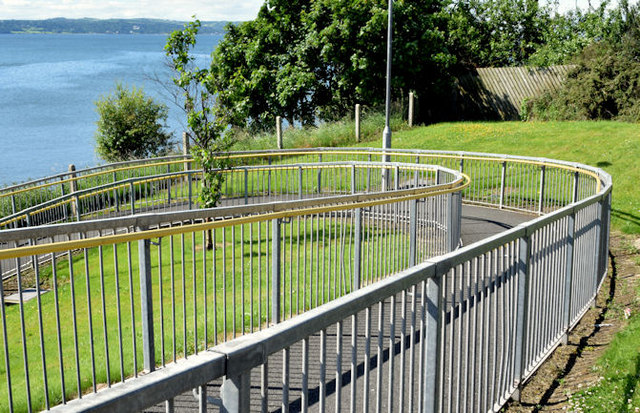National Disability Strategy
Contents |
[edit] Introduction
The National Disability Strategy was launched by the Government in July 2021. It sets out plans to upgrade accessibility in employment, housing and transport as well as tackling access to justice, culture and the arts.
It was prompted by the findings of the 2021 UK Disability Survey which showed that many disabled people felt held back in their everyday lives by:
- Poorly designed homes, transport infrastructure, public buildings and facilities.
- Lack of support at school and at work.
- Negative attitudes of others.
The National Disability Strategy is intended to address these issues, building on the 1995 Disability Discrimination Act (DDA - repealed on 1 October 2010 and replaced by the Equality Act 2010), which established protections for disabled people in relation to employment, transport, education and the provision of goods and services.
[edit] Employment measures
The strategy addresses inclusion in the workplace, tackling the disability employment gap through measures, including:
- Consulting on introducing workforce reporting (for businesses with more than 250 staff) on the number of disabled people.
- Introducing an online advice hub which provides information and advice on disability discrimination in the workplace, flexible working and rights and obligations around reasonable adjustments.
- Piloting an Access to Work Adjustments Passport to help smooth the transition into employment and support people changing jobs. The Adjustments Passport will capture the in-work support needs of the individual and provide them with information they need to have confident discussions about adjustments with employers. It will also set an expectation with the employer that specialist aids and appliances move when their employee progresses in work or moves post.
- Investing £300 million to improve existing provision in schools and make accessibility adaptations for children and young people with Special Educational Needs and Disabilities.
[edit] Home improvements
- Raise the accessibility requirements for new homes and adapt existing homes using the £573 million Disabled Facilities Grant to make changes like widening doors, installing ramps, fitting stair lifts or installing downstairs bathrooms.
- Mandate that 10% of homes built from 2021-26 under the Affordable Homes Programme will be designated as supported housing.
[edit] Transport initiatives
The strategy proposes technology to make rail journeys easier and more accessible including:
- Enabling disabled passengers to contact staff from their seat on the train, with DfT supporting additional innovative projects that will improve communication for disabled passengers and others with reduced mobility on rail services.
Ref https://www.gov.uk/government/news/new-national-disability-strategy-launches
[edit] Related articles on Designing Buildings
- Access and inclusion in the built environment: policy and guidance.
- Accessibility in the built environment.
- Designing for disability.
- Disability Discrimination Act DDA.
- Equality Act.
- Government offers support package to help autistic people into work.
- People with disabilities definition.
- Planning transport for people with disabilities as the population ages.
- Protected characteristics.
Featured articles and news
RTPI leader to become new CIOB Chief Executive Officer
Dr Victoria Hills MRTPI, FICE to take over after Caroline Gumble’s departure.
Social and affordable housing, a long term plan for delivery
The “Delivering a Decade of Renewal for Social and Affordable Housing” strategy sets out future path.
A change to adoptive architecture
Effects of global weather warming on architectural detailing, material choice and human interaction.
The proposed publicly owned and backed subsidiary of Homes England, to facilitate new homes.
How big is the problem and what can we do to mitigate the effects?
Overheating guidance and tools for building designers
A number of cool guides to help with the heat.
The UK's Modern Industrial Strategy: A 10 year plan
Previous consultation criticism, current key elements and general support with some persisting reservations.
Building Safety Regulator reforms
New roles, new staff and a new fast track service pave the way for a single construction regulator.
Architectural Technologist CPDs and Communications
CIAT CPD… and how you can do it!
Cooling centres and cool spaces
Managing extreme heat in cities by directing the public to places for heat stress relief and water sources.
Winter gardens: A brief history and warm variations
Extending the season with glass in different forms and terms.
Restoring Great Yarmouth's Winter Gardens
Transforming one of the least sustainable constructions imaginable.
Construction Skills Mission Board launch sector drive
Newly formed government and industry collaboration set strategy for recruiting an additional 100,000 construction workers a year.
New Architects Code comes into effect in September 2025
ARB Architects Code of Conduct and Practice available with ongoing consultation regarding guidance.
Welsh Skills Body (Medr) launches ambitious plan
The new skills body brings together funding and regulation of tertiary education and research for the devolved nation.
Paul Gandy FCIOB announced as next CIOB President
Former Tilbury Douglas CEO takes helm.
UK Infrastructure: A 10 Year Strategy. In brief with reactions
With the National Infrastructure and Service Transformation Authority (NISTA).























